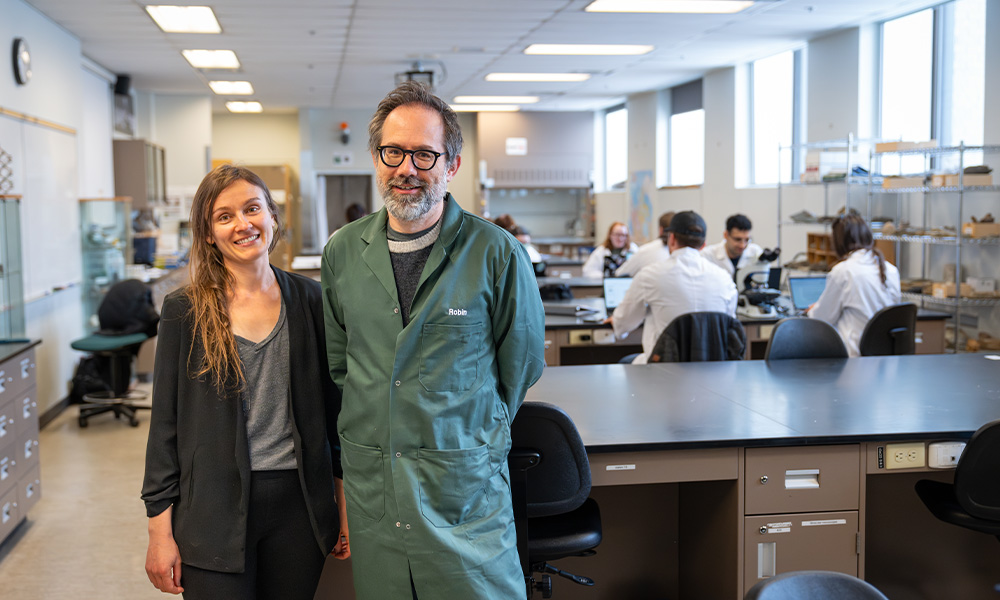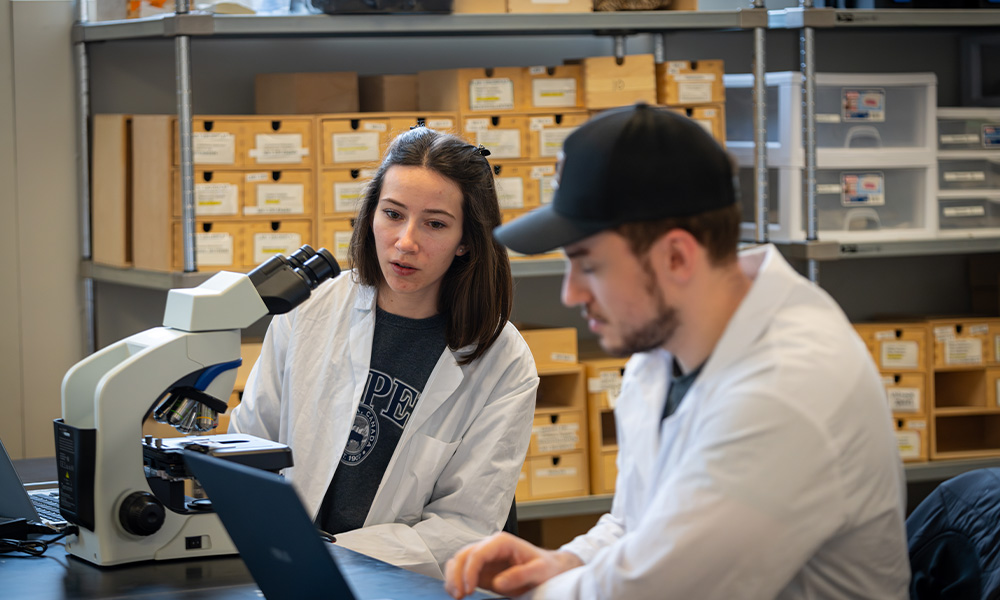Students in Dr. Robin Woywitka’s quaternary environments class are uncovering what Alberta landscapes looked like hundreds to thousands of years ago. Using samples from the Royal Alberta Museum (RAM), they’re able to track what types of plants were in an area at various points in history.
“Small plant and animal subfossils like pollen, leaves, seeds, snail shells, insect fragments and (oribatid) mites, can be recovered from samples such as lake sediment, soil samples, glacial ice, and dung, and used to interpret and reconstruct the landscape over time,” says Diana Tirlea, assistant curator of Quaternary Environments at the RAM. “We typically focus on the last 12,000 years, which is an important time because by then Alberta was pretty much ice-free.”
Museums like the RAM have extensive collections of samples that can be used to develop student-led projects to provide students with hands-on experience analyzing samples and interpreting data. The partnership with Dr. Woywitka’s classes provide students with the opportunity to learn how to analyze real samples just like a scientist would do in their lab.

“When we do certain lab exercises, there's a safety net because your prof designed it,” says Dr. Woywitka. “This isn't like that. We don't know what we're going to get, and that's part of the fun.”
Students were able to choose which project they wanted to work on, either pollen analysis, shell identification or a mapping project, based on which labs they had enjoyed most earlier in the course.
Third-year Bachelor of Science student Alyssa Kich chose to look at pollen samples obtained from lake cores recovered from the Canadian Rockies, which were used to determine how the treeline fluctuated over time. From there, she and her group members plotted the changes on maps.
“Learning how data is collected and analyzed in the real world is very valuable as a student,” says Kich. “It is also a unique opportunity that introduces me to possible career paths after graduation.”
She’s not the only one who plans to continue using the skills from this class into the future. Tirlea says that the partnership has resulted in MacEwan students volunteering and working as interns at the RAM outside of classes. Dr. Woywitka himself was a volunteer there during his undergraduate studies, and he says that working with them now is a nice way to bring his career full circle.
It’s also a way to remind students of the depth of history right here at home, he says.
“Alberta is a really amazing place geologically, archaeologically and palaeontologically,” he says. “Often, we don’t recognize that enough. I love helping students to see that, and hopefully to keep building more interest in places like the RAM.”

